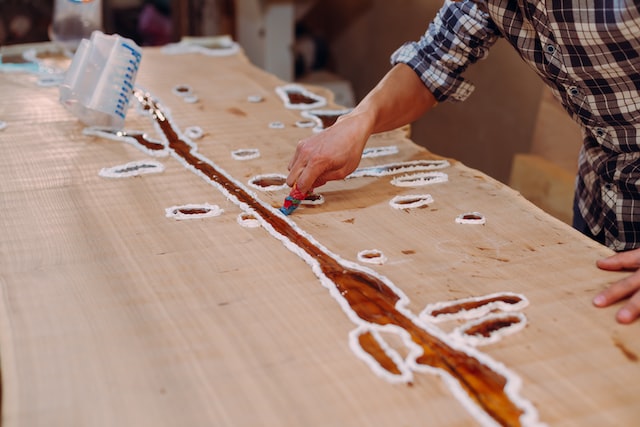Epoxy table tops are popular furniture options that you can find online. And this is something you can do as a DIY project as well if you have some experience in epoxy crafting. This will also require you to have some carpentry skills. Otherwise, you can have a carpenter saw and plane the wood.
The river epoxy table is a very popular type that combines natural looking wood with a stream of epoxy in the middle. Then there are tables where you can add a coating of epoxy on top. It is always good to know the pitfalls you may experience as this will help prepare you to avoid these mistakes. The epoxy you use on table tops is a coating epoxy and you need to pour it in thin layers. A common problem that can arise in this process is that the table top looks wet and cloudy. This is due to the wood not being dry at the time of application. The excess moisture in the wood will combine with the epoxy resulting in a cloudy finish. Even if the wood was dry, the humidity of your working environment can have an impact so it is always good to work in warm areas with a relative humidity under 90%.

You have to be careful when you mix the resin and hardener. If you mix them aggressively, it can impact the appearance as well. You need to make sure that the wood you are using is dry and that you mix the resin and hardener slowly and gently. If there is crystallised epoxy resin, it is best to immerse this container in a warm water bath until they dissolve. Bubbles getting trapped in epoxy are a common issue in so many resin crafts. There can be a bubble or two that makes it through even if you were extremely careful. Slow mixing is the way to go if you want minimal bubbles. Also, when you are working with porous substrates such as concrete or wood, these can emit some gas bubbles into the resin. So you need to seal these surfaces before you pour the resin. If you have some hard to remove bubbles in your artwork, you can use a heat gun at the lowest setting to get the bubbles to rise to the top.

Sometimes there can be streaks on the tabletop or cracks and dimples on the top. The first thing you should do when preparing the table is to have it placed on a level surface. You can use a spirit level to check this. This will allow the epoxy resin to self-level. The temperature in the working area has to be between 700F and 800F and if there are variations in the temperature, it can result in dimples. Too much heat can also cause the epoxy to cure imperfectly where it shrinks and cracks. If you notice that the top of the table is still sticky, then the epoxy has not been cured properly. This can be due to using the wrong mixing ratio or mixing incorrectly using colours that are not compatible with the resin you have chosen.